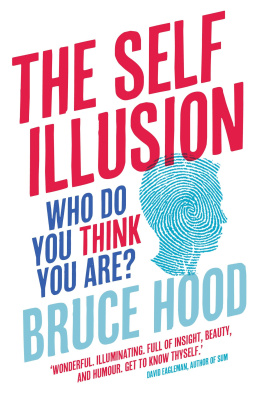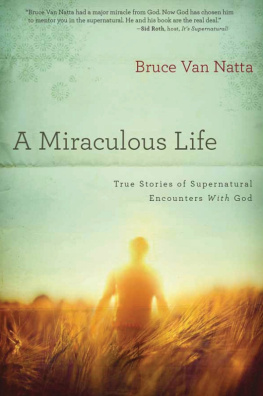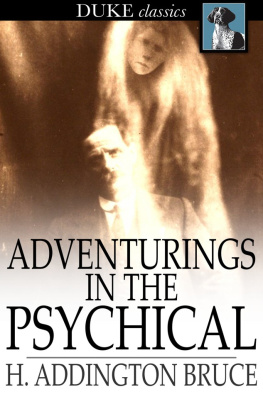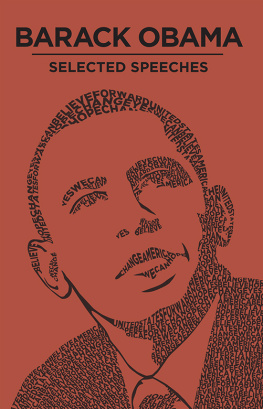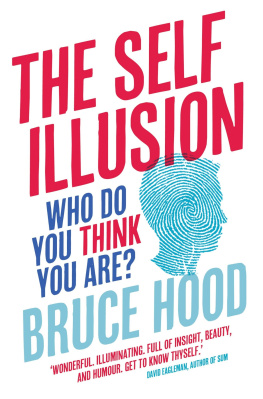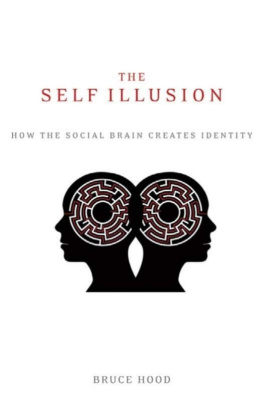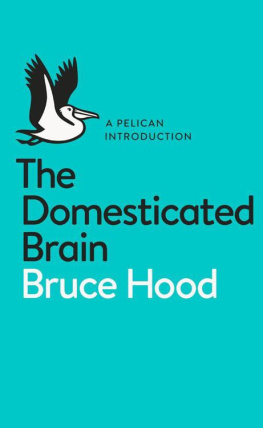
Bruce Hood is currently the Director of the Bristol Cognitive Development Centre in the Experimental Psychology Department at the University of Bristol. He has been a research fellow at Cambridge University and University College London, a visiting scientist at MIT and a faculty professor at Harvard.
SUPERSENSE
From Superstition to Religion the Brain Science of Belief
Bruce Hood
Constable London
Constable & Robinson Ltd
3 The Lanchesters
162 Fulham Palace Road
London W6 9ER
www.constablerobinson.com
First published in the US by HarperOne, a division of HarperCollins Publishers, 2009
This edition first published in the UK by Constable,
an imprint of Constable & Robinson Ltd, 2009
Copyright Bruce Hood, 2009
The right of Bruce Hood to be identified as the author of this work has been asserted by him in accordance with the Copyright, Designs and Patents Act 1988
All rights reserved. This book is sold subject to the condition that it shall not, by way of trade or otherwise, be lent, re-sold, hired out or otherwise circulated in any form of binding or cover other than that in which it is published and without a similar condition including this condition being imposed on the subsequent purchaser.
A copy of the British Library Cataloguing in Publication data is available from the British Library
ISBN: 978-1-84901-030-6
Printed and bound in the EU
1 3 5 7 9 10 8 6 4 2
CONTENTS
PROLOGUE:
WHY DO WE DEMOLISH EVIL HOUSES?
THE HOUSE AT 25 Cromwell Street, Gloucester, England, is no longer there. In October 1996, the city council ordered the removal of all physical traces of the Wests home where young girls were raped, tortured and murdered by Fred and Rosemary during the 1970s. Fred had used his builders skills to conceal the bodies at the three-storey family home. First he buried them under the basement floor but when he ran out of space, he turned to the garden. His own sixteen-year-old daughter, Heather, was entombed under the newly laid patio. During the investigation, there was a rumour that some of the paving stones had been stolen from the crime scene. Unscrupulous locals had salvaged the slabs and an unwitting resident was now the proud owner of a barbecue made from the stones used to hide the horrors at Cromwell Street. Nick, a fifty-something landlord who owned other houses in the street, told me this rumour was a myth. He was there. The council had removed every last brick. These were crushed into dust and then scattered across a landfill site in unmarked locations.
In the brilliant sunshine of Holy Thursday, April 2007, I stood on the exact spot where many of the bodies had been buried. Nick helped me locate this. Its now a passageway between the remaining row of houses and a Seventh-Day Adventist Church. I did not know about this oddity of street planning and was shocked by the closeness of heaven to hell on earth. Could the congregation ever have imagined what was going on next door as they prayed? Did this proximity to the church heighten the Wests sense of depravity?
I watched for half an hour as Gloucesters youngsters used the convenient walkway to get to wherever they were going. Most were heading to the nearby park. The unseasonably hot April day had brought out loose summer clothing, carefree laughter, and a spring in the step of the youth. Very unusual for this grim, English city, well past its prime. As they sauntered past the overdressed psychology professor who seemed to be oddly preoccupied with a passageway, they were oblivious to the human suffering and atrocities committed at this spot thirty years earlier. And why not? It was simply an empty space.
Why do we demolish and remove houses associated with appalling murders? The same happened to the Oxford Apartments in Milwaukee, Wisconsin, where Jeffrey Dahmer lived, and the house where Ian Huntley murdered the two little girls in Soham, England. Dahmers place is now a car park and 5 College Close has been laid to turf. Houses associated with notorious murders are difficult to resell. The Colorado home where the body of the child beauty star JonBent Ramsey was found has been on and off the market, always selling below its true value. US realtors call these properties stigmatized homes and they present a considerable marketing challenge. Disclosure laws vary from state to state. In Massachusetts, if you dont ask, they dont need to tell. In Oregon, vendors dont have to reveal anything. Hawaiian realtors are legally bound to reveal everything that might affect the value of a property, including ghosts. In the United Kingdom, you have to declare whether you have fallen out with the neighbours in a dispute. But there is no legal requirement to tell prospective buyers about the murderous history of a house. Deception is common, since most people would prefer to see these places obliterated from existence and memory.
In 2000, Alan and Susan Sykes sat down to watch a Channel 5 TV documentary about Dr Samson Perera, the Leeds University scientist who murdered and dismembered his teenage daughter, 15 years earlier. As the programme unfolded, Alan and Susan were shocked to discover that their modest house in Wakefield, West Yorkshire, was the actual
Could you live in the house in Wakefield? Even if there were no missing body parts secreted around the building, just the thought of something horrible taking place is enough to keep most away. Are you someone who would cross the street to avoid standing on the spot where evil took place or would you relish the thrill? Why do we feel the need to replace something with nothing?
A physical building is a powerful reminder that can trigger painful memories and emotions. Maybe I was no better than the trail of ghoulish sightseers to Cromwell Street that Nick had witnessed over the years. If there is nothing to look at, then shouldnt this keep the weirdos away? At least removing the visible reminder makes it easier for a community to heal and forget. But demolishing a building, crushing the rubble into dust and taking it away to secret locations with demolishers under oath not to reveal the final whereabouts seems a bit excessive.
What would motivate a souvenir hunter to want to own a brick or some physical thing associated with a murderer? The same goes for objects such as Nazi memorabilia. The worlds largest auction website, eBay, has banned the sale of these items and anything that glorifies hatred, violence, or intolerance. But what attracts people to them in the first place? Maybe its the excitement of being subversive. Any parent with a rebellious teenager knows that the macabre is a source of fascination for these fledgling adults. Part of growing up is the need to express individuality through statements of rebellion. By their nature, taboo topics intrigue the young who want to be outrageous in an effort to shock.

FIG. 1: The passageway at 25 Cromwell Street where the Wests buried many of their victims. AUTHORS COLLECTION.
What about collectors of less insidious memorabilia? Mature adults will pay good money for personal items that once belonged to famous
Memorabilia collectors and those with object fetishism are behaving in a very peculiar way. They are attributing to physical objects invisible properties that make them unique and irreplaceable. This kind of thinking is misguided. For one thing, significant objects can be faked. That brick, that tuxedo or that bed linen may be a forgery. In the Middle Ages, there was a roaring trade in Christian relics to cater to the legions of pilgrims traipsing across Europe from one holy shrine to the next. Relics could be any objects connected intimately with religious celebrities. Bones belonging to saints and martyrs were particularly popular as were any items connected with Jesus. Bits of the cross or shreds of the shroud were easy to fake and trade was
Next page

